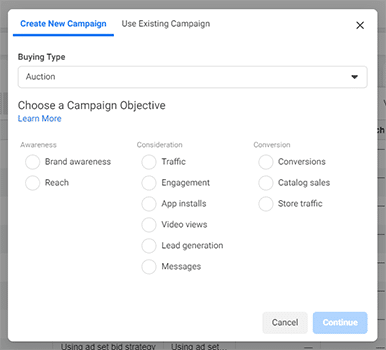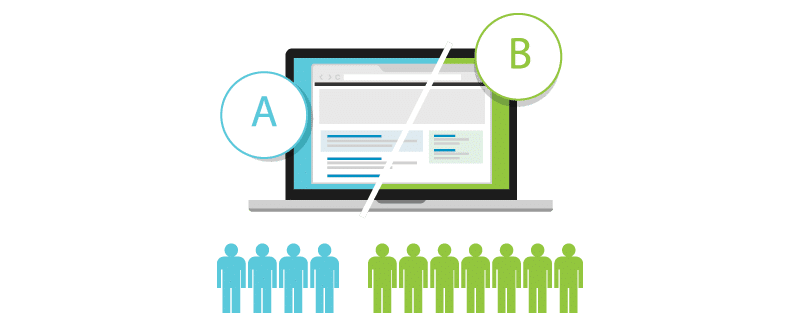If you’re a business advertising through social media, you know how important it is to closely monitor the performance of your account. Savvy business owners and managers know that you must set marketing KPIs and adjust your campaigns based on their performance.
Learning how to generate leads or how to get more followers on your Facebook business page can vastly improve your company’s bottom line, but it comes at a cost. The cost per lead of your Facebook Ads show how much you’re paying to acquire each lead.
Databox found the average CPL for a Facebook campaign falls between the $0 and $25 mark.
But if you’ve checked your reporting dashboard and realized you’re paying over the odds for each lead, you’ll have one question: How do you reduce your CPL?
How to Reduce Cost per Lead on Facebook
Here are five simple techniques you can use:
1. Use the Lead Generation Campaign Goal
You’ll have to choose a goal for a Facebook campaign whenever you create new adverts.

This is the main result you want from the ads, and impacts who the advertising algorithm shows your content to, such as:
- Brand awareness (showing your ad to the largest group of people)
- Link clicks (showing your ad to people likely to click on Facebook links)
- Conversions (showing your ad to people likely to purchase items from Facebook)
Technically, you can use any of these goals to run your Facebook campaigns. But if your main goal is to increase lead quality and reduce the cost of each, it makes sense to set your goal to lead generation. That way, Facebook will be more likely to show your ad to people with a history of submitting forms.
Sean Collins of Barrel explains that this reduces your CPL “because the traffic never leaves the platform, we get some very low-cost leads.”
2. Think About Audience Targeting
The next stage of your Facebook campaign creation is to pick the people you want to target. But this goes beyond adding their interests and doubling-down on the age of your target lead.
You can use two audiences to reduce your CPL, according to some experts:
- Lookalike audience: A list of new Facebook users similar to those who’ve already filled-in your forms. Alejandro Rioja says: “Since you receive leads exclusively from Facebook, a lookalike audience derived from the lead ads will be higher quality.”
- Retargeted audience: These might be people who’ve visited your website, liked your Facebook Page, or watched a video. According to Ali Rizvi of Dream Superhero, “using an engagement audience from the lead ads is the best way to lower your cost and increase volume.”
3. Play on Your Audience’s Pain Point
Talk to your sales team and really get to know what your ideal customer looks like. Chances are, these are the people you’re hoping to attract with your Facebook campaigns.
What pain point are they struggling with? Some examples include:
- The product is too expensive
- They can’t get buy-in from their boss
- They don’t know anyone who can vouch for you/the product
Find the pain points your target leads are battling with, then use that within the copy of your Facebook ad to reduce its CPL, as POSH Digital Media’s Joe Karasin explains: “For example, when we are running FB ads for mortgage lenders, we start our ads with ”If you’re planning on refinancing…”
“By using specific language, we are able to both qualify and disqualify leads, so we don’t end up with a bunch of useless clicks,” Karasin adds.
4. Use a Giveaway as Your Hook
People are unlikely to fill in a form unless they’re really interested in what you’ve got to say, or you’re solving a pain point of theirs. Depending on your business, that might be a small portion of your audience—hence why the CPL of your Facebook campaigns is sky-high.
You’re able to boost interest (and the number of people turning into a lead) by giving them an incentive, such as:
- Entries to a giveaway or sweepstake
- A free product
- Vouchers or discounts on their next purchase
Michael Dinich explains that The Money Mix ads “were averaging a $2 CPA to gain email subscribers, but after implementing sweepstakes our CPA has an average 13 cents or less.”
5. Split-test the Number of Form Fields
“The best way to lower your CPL for Facebook Ads is to continually run an A/B test to optimize your ad,” says Katherine Hunter-Blyden of KHB Marketing Group.

You can split-test anything from your ad copy to your audience targeting. However, David Denning of Jumpstart Go thinks you should split-test the number of fields on your form because “the more questions and steps they have to take, the less will finish and come through as leads (which increases your cost per lead).”
Research backs this up: One company increased their conversions by 120% after dropping from 11 to 4 fields on their forms.
Split-test to see whether your Facebook campaigns have the same impact.
Final Thoughts on Reducing Facebook CPL
The CPL of your Facebook campaigns is something you should be keeping a close eye on—no matter the goal of your campaign. It shows how much you’re paying to acquire each customer.
Compare your CPL to other financial metrics, like your CLV, to see whether Facebook Ads are generating a return on your investment. If it isn’t, these five tips are bound to help you reduce your CPL (and start making a profit.)
Let MARION Help Improve Your Social Media Performance
MARION has been helping Texas businesses successfully market themselves for nearly 40 years. Our team of strategists offers branding, traditional, and digital marketing services that can grow your business into a revenue-generating machine.
Contact us today to schedule a free consultation if you need help with social media marketing in Houston, Austin, or DFW.
